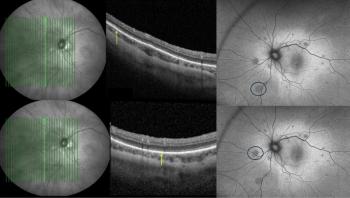
The future of anti-VEGF
This article provides a brief overview of the outcomes of a webex meeting hosted by Novartis at SOE 2013 in Copenhagen, Denmark.
After the positive opinion was issued, Novartis hosted a webex meeting at the European Society of Ophthalmology (SOE) 2013 in Copenhagen, Denmark, on the role of long-term anti-VEGF therapy. This briefing examined the data that led to the recommendation, discussed the outcomes of the ranibizumab versus bevacizumab head-to-head trials and surveyed possible future options for AMD treatment. Here, we give a brief overview of the outcomes of this meeting.
RADIANCE data
The RADIANCE study2 examined 227 patients randomized 2:2:1 to treatment with Lucentis [based on stability of visual acuity (VA); n = 105], Lucentis (based on disease activity; n = 116) or Visudyne PDT (n = 55). The primary endpoint (superiority of 0.5 mg Lucentis vs Visudyne PDT as assessed by mean average change in BCVA from baseline) was assessed at month 3; after this point, patients in the Visudyne group became eligible for treatment with Lucentis.
"The natural history of this disease is that there's a decline in vision over time, but now we've seen, in this large pivotal controlled trial, that ranibizumab has provided rapid visual improvements in patients with myopic CNV," explained the Medical Director of Novartis Ophthalmology during the meeting.
Newsletter
Get the essential updates shaping the future of pharma manufacturing and compliance—subscribe today to Pharmaceutical Technology and never miss a breakthrough.













































